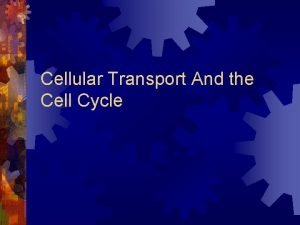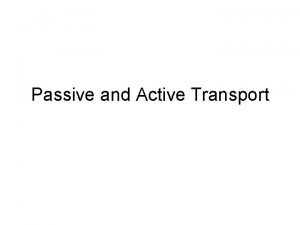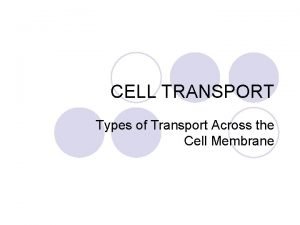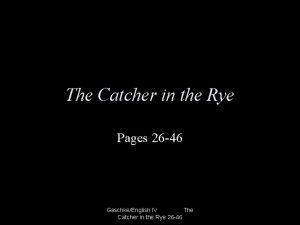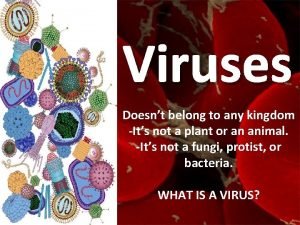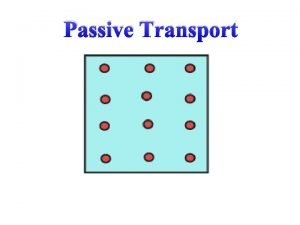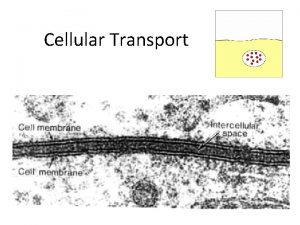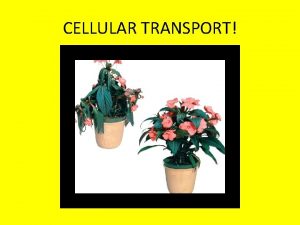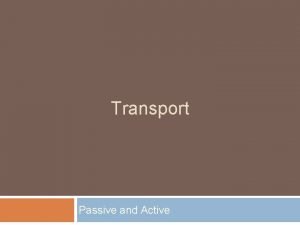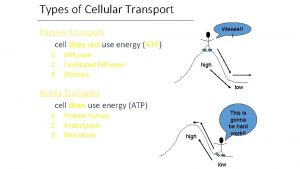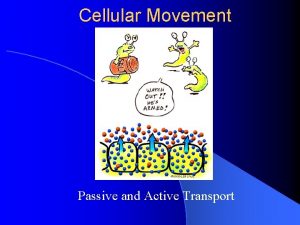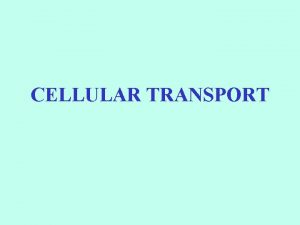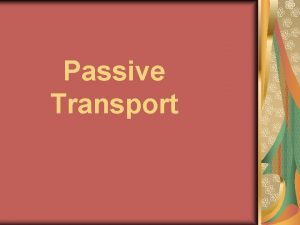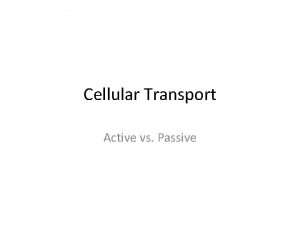Types of Cellular Transport Passive Transport cell doesnt










- Slides: 10

Types of Cellular Transport • Passive Transport cell doesn’t use energy 1. Diffusion 2. Facilitated Diffusion 3. Osmosis • • Animations of Active Transport & Passive Transport Weee e!!! high low Active Transport cell does use energy 1. Protein Pumps 2. Endocytosis 3. Exocytosis high This is gonna be hard work!! low

Movement of molecules Cell membranes only allow some molecules across w/out help: • Small, non-polar molecules OK ex. steroids, O 2, CO 2 • No charged, polar, or large molecules ex. sugars, ions, water*

Movement of molecules Simple Diffusion: most basic force to move molecules • Disperse until concentration equal in all areas

Transport Across Membranes Types of transport: A. Passive transport - Simple diffusion - Facilitated diffusion - Osmosis B. Active transport C. Bulk transport • Energy Required? • Directionality?

Passive Transport - Simple Diffusion • NO ENERGY required • DOWN concentration gradient • molecules equally distribute across available area by type - non-polar molecules (steroids, O 2, CO 2)

Passive Transport – Facilitated Diffusion • NO ENERGY required • DOWN concentration gradient • molecules equally distribute but cross membrane with the help of a channel (a) or carrier (b) protein.

Passive Transport - Osmosis • osmosis – movement of water across cell membrane • water crosses cell membranes via special channels called aquaporins • moves into/out of cell until solute concentration is balanced

Passive Transport - Osmosis Paramecium example • regulate water balance • pond water hypotonic • water into contractile vacuole – water expelled

Passive Transport - Osmosis Scenario: in movie theater, watching a long movie. You are: drinking water What happens to your blood? You are: eating popcorn What happens to your blood?

Active Transport • ENERGY IS required • UP/AGAINST concentration gradient • Ex. Na-K ion pump - Na+ ions: inside to out - K+ ions: outside to in • transport proteins a. ion pumps (uniporters) b. symporter/antiporter c. coupled transport • antiporter: two molecules move opposite directions (UP gradient)
 Cellular transport and the cell cycle
Cellular transport and the cell cycle Practice types of cellular transport
Practice types of cellular transport Receptor - mediated endocytosis
Receptor - mediated endocytosis Types of cellular transport
Types of cellular transport What was holden's reaction to allie's death
What was holden's reaction to allie's death Doesnt really matter
Doesnt really matter What goes up and doesnt come down
What goes up and doesnt come down What does dna have that rna doesnt
What does dna have that rna doesnt Porn wallpaper
Porn wallpaper Gfletchy 3 act task
Gfletchy 3 act task King henry doesnt usually drink chocolate milk
King henry doesnt usually drink chocolate milk
